#historic garment design
Photo
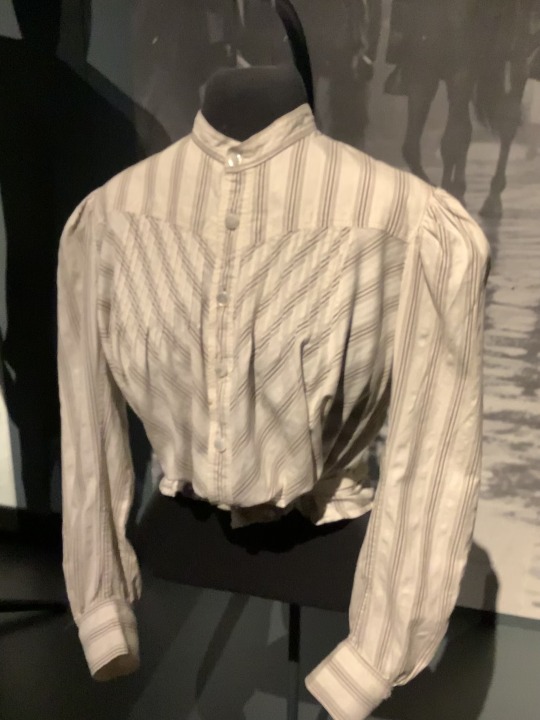
Playing With Stripes: Shirtwaist at the Grand Rapids Public Museum
Stripes are one of the most common patterns in fabrics and also one that has much potential for playing around in garment design. We are most used to stripes running up and down, as on men’s and men’s dress shirts. Then in sportswear, you sometimes see a collar or cuffs, cut on the bias, or diagonal. And an entire blouse bodice can be cut on the bias, a technique used in the 1930s, that I have tried and been pleased with. More on that later.
The cotton shirtwaist, or blouse, was popular in the late 19th and early 20th centuries in the United States and in Europe. It was a break from the dress which was more expensive and harder to clean. A working-class woman could afford a set of cotton blouses to wear with a single skirt, and put some variety into her wardrobe. Yes, the first example of what some call a capsule wardrobe.
This shirtwaist uses bias on the bodice beneath a straight-grain yoke and with a straight-grain button placket . This is a smart idea because puts stability where you need it and allows for the drape of bias where it is flattering. You want stability at the button placket to hold the weight of the buttons and for the buttonholes which must bind the cut fabric. The yoke gives you a trim and relatively stable shoulder line (though it is necessarily on a slight bias to shape to the shoulder’s angle), and from the yoke drapes the bias portion which both creates a soft mass over the bustline and appears to whittle the waistline. Both important to creating the then ideal silhouette of a full bust and a tiny waist. The soft, gathered sleevehead also emphasizes the wide to narrow drop from shoulder to waistline.
Working with stripes takes more effort than a plain weave. You must mirror the stripes from one side to the other or risk making the wearer look slightly drunk. And notice here the button placket is cut so that it does not disturb the stripes found in the yoke. But I always think the effort is worth it.
This is part of the Grand Rapids Public Museum’s exhibition on Fashion and Nature, which has a section on cottons. For more info, go here: https://www.grpm.org/fashion-and-nature/
#shirtwaist#blouse#vintage shirtwaist#vintage blouse#vintage fashion#costume history#dress history#fashion history#bias fabric#sewing#vintage sewing#dressmaking#vintage dressmaking#garment design#historic garment design#history of garment design#bias cut#bias#stripes#sewing with stripes#designing with stripes#grand rapids public museum#fashion and nature#costume history exhibition#dress history exhibition#fashion history exhibition
42 notes
·
View notes
Text

MY COLLECTION GROWS.......
#I LOVE YOUUUUUUUUU ACCURATE HISTORICAL FASHION I LOVE YOUUUUU#BITING AND SNARLING!!!!#btw if anyone has any good resources on babylonian garments and fashion pretty please id love to see them#wanna make a lilith design and make her from Mesopotamia#tho finding specific regions centric clothing like babylon has been a bit tough#lots of assyrian and greek stuff tho very cool
139 notes
·
View notes
Note
Hi!! I'm super interested in the outfits you have your kirby ocs in. If it's not too much trouble (and only if you want to) could you go through the different garments they're all wearing when you have time?
I don’t have much time so I’ll do just one character this time but I’ll definitely post more outfit breakdowns for my other Kirby ocs! But yes I am super excited about outfit design and making sure that garments make functional sense so thank you so much for asking!! Feel free to ask again to give me an excuse to draw more of these
Here’s the one character I’ll cover this time! The dark matter hero of yore oc!


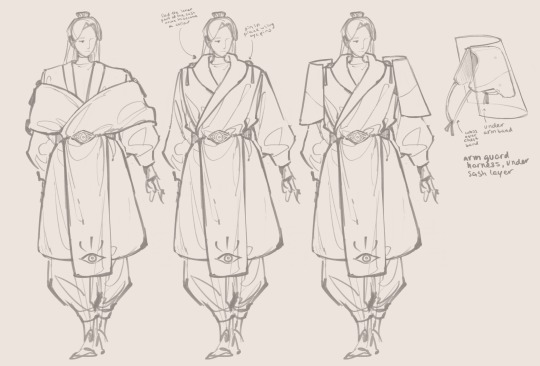
Thoughts are in the read more!
The main idea that I wanted to have for them was that they’re calm, collected, and kind of uptight due to imposed restrictions rather than it being their own character trait. Essentially my idea for this character is that they’re in a rather precarious place in terms of public perception due to the general belief that dark matter is has a negative moral connotation, but remain a “hero” just because the powers that be deemed that they needed to have four. Why? Who knows, perhaps they wanted to make sure that they had a scapegoat. They’re not a very powerful astral when they’re selected but they are made so through the gradual injection of dark matter into them, something which grows stronger from their sadness and hopelessness over their situation and begins to take over their subconscious until it is able to usurp their identity fully.
So the first layer is a full body covering in black, a turtleneck, black toeless knee socks, and a pair of sweatpants. The sweatpants are there to give the impression of looseness and relaxation, but gathered to show the bit of uptightness along with the tight turtleneck.
The second layer, a cool teal-ish gray tunic, is a nod to who they were before the injection of dark matter turned their hair white. Their original color was a greenish teal, a color that is not quite on the opposite side from red (which is associated strongly with dark matter) but still quite far from it. There’s some padding in the shoulders to give them a more solid shape with the other layers, and for comfort when the armor is put on. The side slits help with mobility. This tunic layer is made of very sturdy material that functions essentially as chain mail. It doesn’t give protection to the heart, the essential organ, but there is also a question of whether they want that to be protected or not, and whether it would even kill them or not to be stabbed through the heart.
The third layer is a cool off-white overcoat, and overwhelms the design with white because white is more associated with virtue than black is, and shows, beyond surface level light=good association, a feeling of emptiness. It is both a way that they try to distance themselves from the idea of “dark” matter and a sign of how they are forced to devoid themself of any personality or strong individuality to maintain good graces with the public.
The belt is mostly just a way for me to give more shape to the silhouette by gathering the waist, but the eye shaped brooch was a kind of last minute decision to add a bit extra detail! The leather strap of the belt wraps around the back and towards the front tapers off to a chain of metal beads, which have a hooked clasp at the front concealed by the eye brooch.
Finally, a long scarf/sash is wrapped off the shoulders and tucked in through the belt. There are two overlapping layers at the front, and the back layer is shorter than the front. This is a very constricting configuration that makes it difficult for them to raise their arms very high without displacing it. To keep it nicely on the shoulder, each side is help up with an eye-shaped pin, securing it to the white overcoat layer a bit under the shoulders. The red teardrop jewels hanging from those are just an extra pop of the red accent color. The underside of the scarf is red, but difficult to see if they keep their arms lowered.
In their more battle-ready outfit, they raise the dropped shoulder scarf up to wrap around the shoulders and neck, and fold the inside down to make it a red collar. This is symbolic of how they depend on the power of dark matter injected into them to fight. The collar is secured with the pins. Then, pauldrons are added, with the harness for them being secured with straps across the chest underneath the scarf and under their arms. I forgot to draw it but they also wear shin guards underneath the pants, over their socks.
#kirby gijinka#kirby oc#heroes of yore#besides the armor none of the garments are inspired by any specific culture I think#if this does look very similar to any cultural historical garments let me know! I love researching those and incorporating them into design#hi sorry I keep editing this post I feel bad about it being so long so I added a readmore
74 notes
·
View notes
Text

Thrift Hall was a success. 80 dollars got me all this fabric!!
#*costume design adventures#very close to some of the original fabrics used#some I may save for historical garments for the colonial period
2 notes
·
View notes
Text
screaming and crying when i see “vintage sellers” online selling 18th century waistcoats and shit for like $90 so someone can either destroy it with sweat and dirt and wear or they can shove it in a garment bag in the back of their closet where no one can see it or learn from it. this is definitely like. nuanced and it’s hard to draw the line between something that’s vintage and something that’s.. idk an “artifact” that should be preserved and museums definitely do not always do what they should or treat their collections perfectly BUT gd it’s gotta be better than the dpop girlies
#idk idk!!!#because we definitely don’t do as much with our textiles collection as we could and i’m trying to change that#but we’re a tiny county historical society like#even the state historical society has a special archive for clothing and textiles and they have a preservation specialist etc#i’m working on cataloguing and storing all the lingerie in our archives rn and designing an exhibit for that#so i guess i have garments on the brain#but it’s always been a pet peeve i guess#like there’s definitely way worse things people do but this one thing bothers me personally lmao
2 notes
·
View notes
Text

This is an outfit from when Filonyn was very young, but they do still have it. Since it was before they were living among humans, they didn’t have to wear a big hat with it.
#my art#oc tag#my ocs#monster of the week#motw#i have a lot of different period outfits for them bc they’re fun to draw#this one’s 9th century AD. they still have it though#filonyn’s closet contains some of the best preserved medieval clothes in the world#entirely because they never throw shit away and are obsessive about keeping all their clothes in good condition#they’ll occasionally break these historic garments out for the local renaissance faire#they have a booth there where they sell fabrics.#general audiences are no longer interested in old fashioned handmade textiles so they must sell at the renaissance faire#really they’d probably do numbers on any social media website but unfortunately?#their main social media presence is an account on a sewing forum that was popular in the 1990s but now has almost no users#they go on there and post extremely detailed explanations of nearly lost sewing and weaving techniques#which are only viewed by the 3 or 4 old ladies who still use the website#when i design these outfits i combine elements from both menswear and womenswear from the time period#a lot of them look very feminine by modern standards but that’s just bc men’s fashion used to be better than it is now#the miniskirt here is actually menswear inspired. no medieval woman would wear that#but men did!!!!#the bodice is based on a gown though#filonyn
6 notes
·
View notes
Text
I just brushed my teeth and washed it down with sparkling water (bc my piping system is not doing well rn and I only had sparkling water on me even if I don’t drink it), so you better know I’m starting this day writing my ass off
#riveting experience truly#sneaky niki#lamb loose liveblogging#so I am quite close to finishing ch 13 now#which is nice#but I believe i made SDY too fashion forward for the setting#bc let’s be honest here#the only character truly donning historically accurate garments here is varsity jacket boy (still need to be introduced properly in the fic)#he is the only one dressing appropriately for 2011 fashion crimes standards of the regular layman of the era#the rest of the original cast tho?? it’s runway time babeeey#so of course SDY is dressing better than the regular boi next door#why wouldn’t he? SDY is not any regular bitch after all#but somehow this is stressing me#like. SDY at this stage is living his best life finally free and some late ‘70s to mid ‘80s nostalgia is happening in his wardrobe#but that’s more bc it’s a thematic thing yk?#like in Carol where the characters are switching colors (red and green) the more they get to know each other#or in Pride and Prejudice when Darcy loosens up a bit and Lizzy wears lighter colors#WALK WITH ME see my vision#so yeah. SDY might look ooc to you but trust me he is not#trust my vision and embrace his becoming this is my design and you’ll gonna love it#I hope anyone reading these silly tags finds some money on the ground today#get yourself a little treat#and have a good day#(it’s 5am I am exhausted)
1 note
·
View note
Text
Ok I get where everyone is coming from when they see the design of Pavitr ‘Pav’ Prabhakar aka Indian SpiderMan as an expression of gender queerness, but let me be frank this is very typical Indian male costuming.
Even the toxic masculine patriarchal men have similar stylistic expressions or to be be more precise this is a traditional/historical/ye olde male aesthetic.
Having said that I love what design elements are being used here. So…
Let's take it from the top.
The FACE MASK

The Three Colors surrounding the eyes are typical spider man colours but they are done to evoke the image the traditional makeup done for the ancient dance art Kathakali. In which the whole face is painted and bold lines are drawn to emphasise/exaggerate the eyes. These eye mask lines are usually thin - bold-thin.
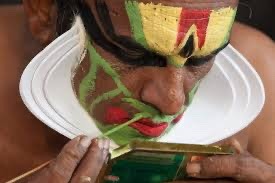
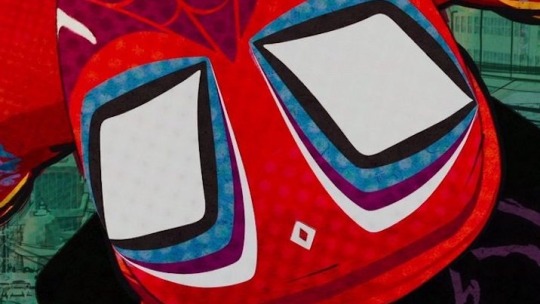

Same with the white lines on the cheek bones which are indicative of tusks or pincers of demons or Animorphs in folklore/myths.
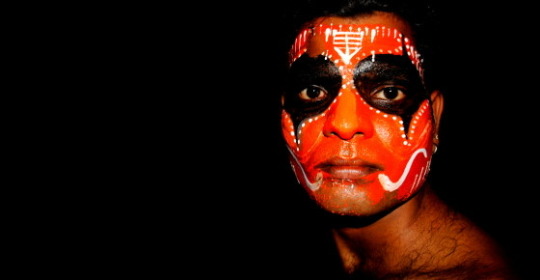


The white dot in the centre of the forehead is the most common Hindu motif, expressed in myriad of ways all over the country .
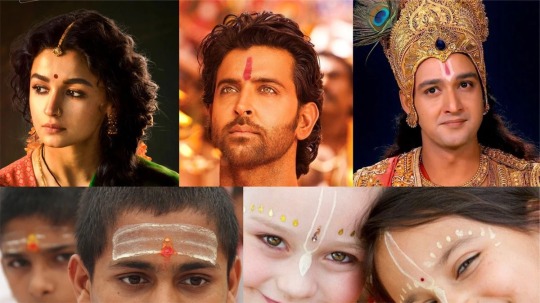
The ARM/LEG BANDS/CUFFS

The bicep cuff is a part of Indian historic armour - made of malleable metal, its bejewelled ornate counterparts were then worn in day to day life. Here in the north Royals still wear it during big ceremonies. These metal bands are generally worn by warriors.
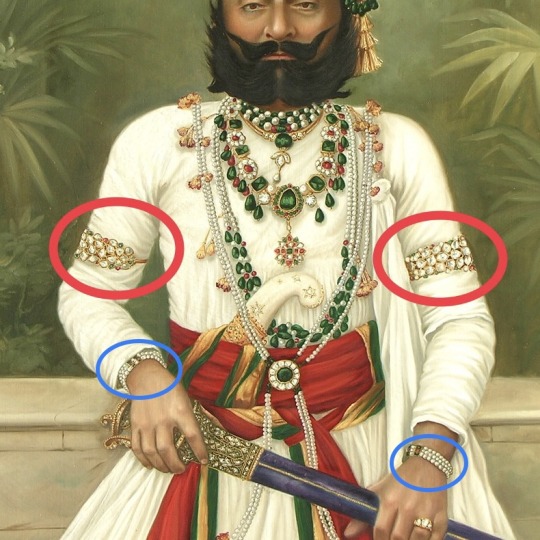

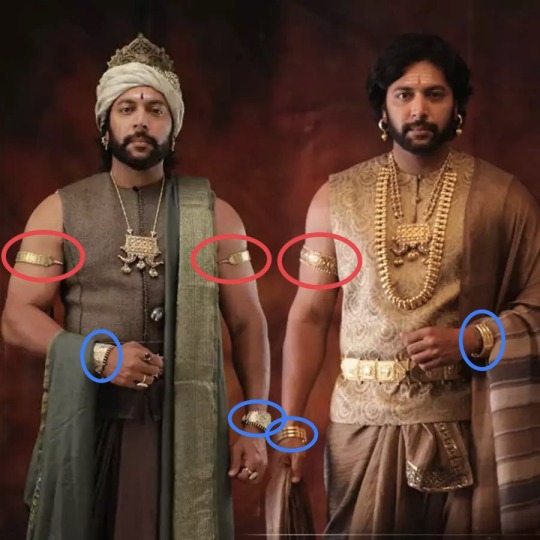
bangles (metal circles worn at wrists) are an important male accessory and are more daily wear even in present modern times, some religions (Sikh,Jain etc.) require the males to always wear one at all times. The ones on the suit were more in the shape of wrist guards which again were an armour accessory. In Indian male clothing the cuffs are usually emphasised.
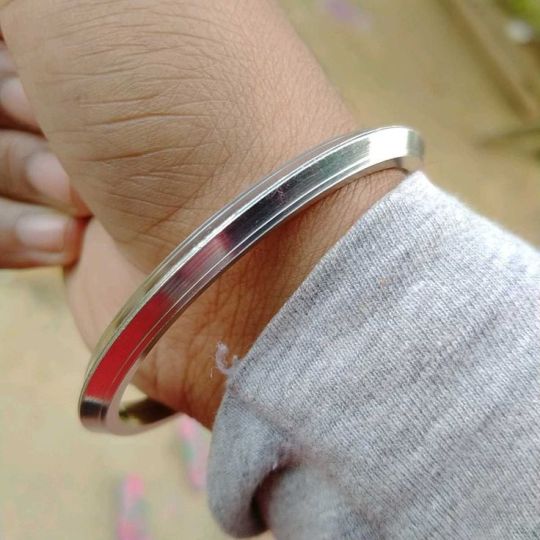
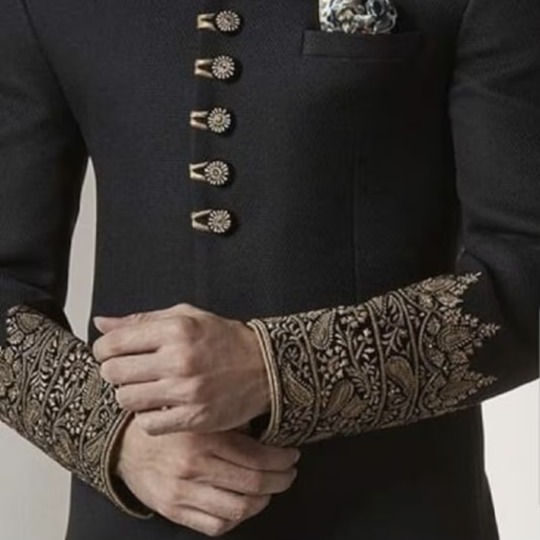
Due to traditional male footwear being sandals metal ankle cuffs were employed to guard the shins and were worn during wars while thinner bands - ornamental accessories - were worn in daily wear.
There are so many other things I want to elaborate on like: The PATTERNS/LOGO,The LEG GARMENT (??!)(what’s the collective term for clothes for legs?), The Cat’s Cradle swinging/body animation ; but my ADHD is already acting up so imma leave this here.
SIDE NOTE:
I love how the heel and toes are bare in this design. It makes sense from the spider powers perspective - no barrier in contact allows for better manoeuvring and jump control as is seen in gymnastics. But also because in Hindu culture important tasks including some traditional sports require the removal of footwear and getting feet dirty is not discouraged (of course with an adherence to washing of the feet multiple times in a day)
I also loved how incorporated his wrist guard is in his spider style using it as a toy and a tool. This aspect of making use of something in a completely different way was so desi ‘Jugaad’ I was stunned.
#spiderman atsv#across the spiderverse#pavitr prabhakar#desi#design#letting my inner design nerd out#Indian warfare was my special interest#If you haven’t guessed by now#astv#desi experience#sony spiderverse#into the spider verse#Desi spiderman#indian spiderman
9K notes
·
View notes
Text
So I accidentally almost got into an argument on Twitter, and now I'm thinking about bad historical costuming tropes. Specifically, Action Hero Leather Pants.
See, I was light-heartedly pointing out the inaccuracies of the costumes in Black Sails, and someone came out of the woodwork to defend the show. The misunderstanding was that they thought I was dismissing the show just for its costumes, which I wasn't - I was simply pointing out that it can't entirely care about material history (meaning specifically physical objects/culture) if it treats its clothes like that.
But this person was slightly offended on behalf of their show - especially, quote, "And from a fan of OFMD, no less!" Which got me thinking - it's true! I can abide a lot more historical costuming inaccuracy from Our Flag than I can Black Sails or Vikings. And I don't think it's just because one has my blorbos in it. But really, when it comes down to it...
What is the difference between this and this?
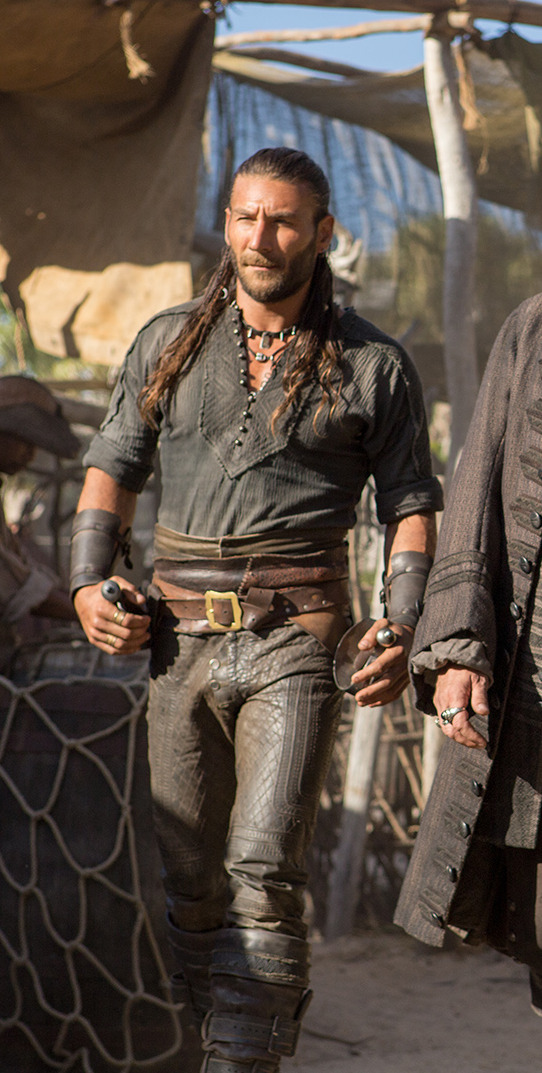
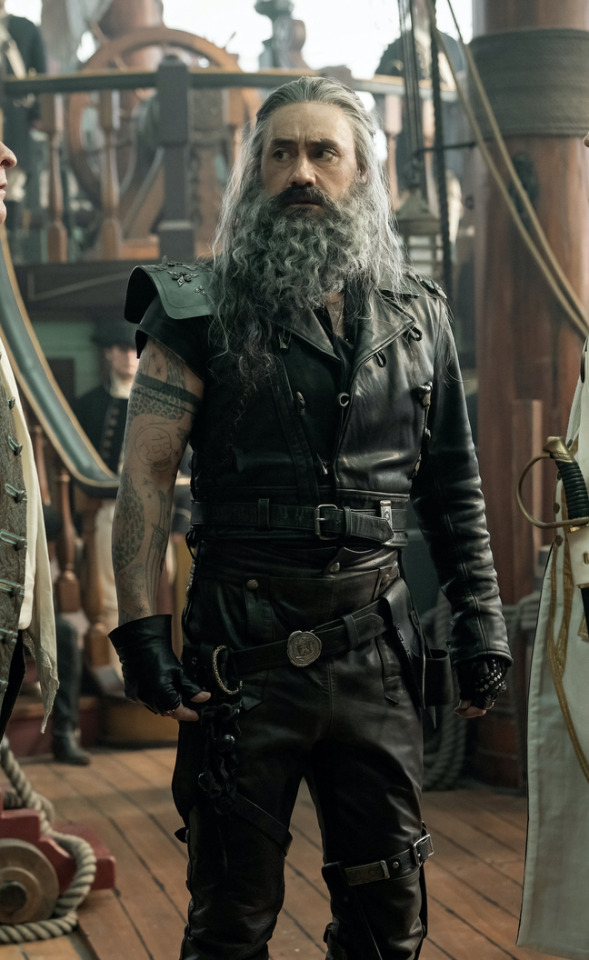
Here's the thing. Leather pants in period dramas isn't new. You've got your Vikings, Tudors, Outlander, Pirates of the Caribbean, Once Upon a Time, Will, The Musketeers, even Shakespeare in Love - they love to shove people in leather and call it a day. But where does this come from?

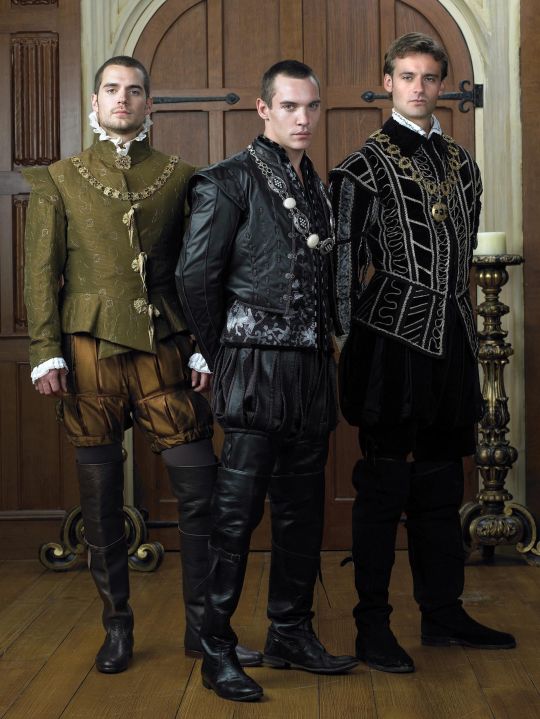
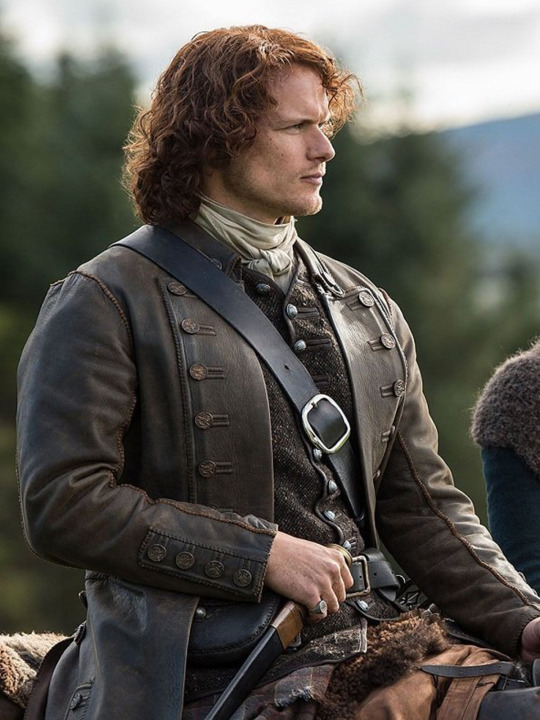

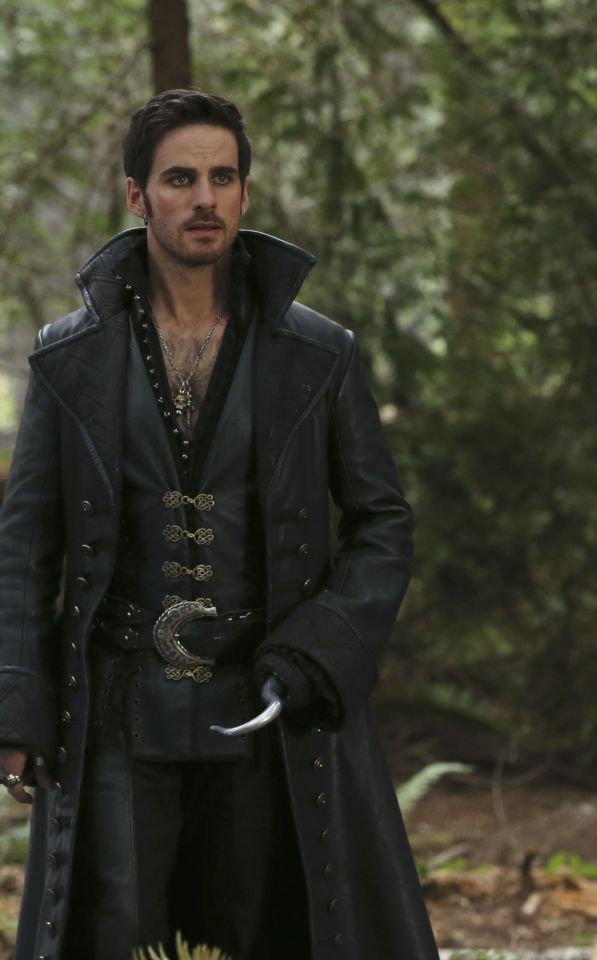
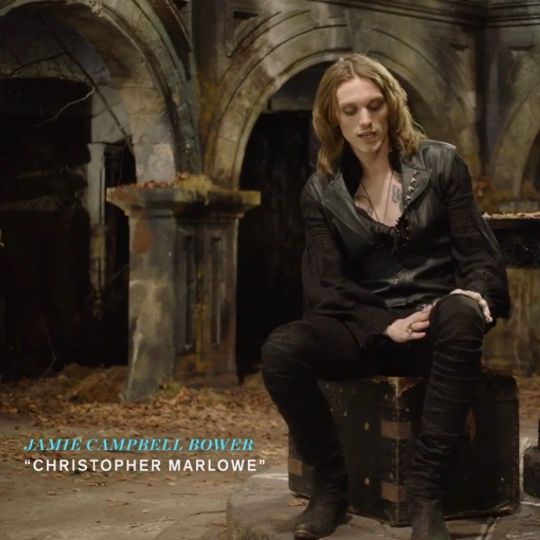
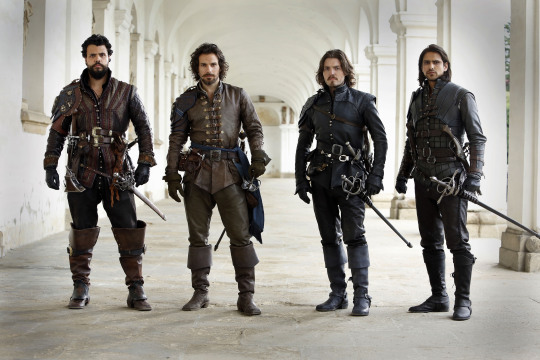

Obviously we have the modern connotations. Modern leather clothes developed in a few subcultures: cowboys drew on Native American clothing. (Allegedly. This is a little beyond my purview, I haven't seen any solid evidence, and it sounds like the kind of fact that people repeat a lot but is based on an assumption. I wouldn't know, though.) Leather was used in some WWI and II uniforms.
But the big boom came in the mid-C20th in motorcycle, punk/goth, and gay subcultures, all intertwined with each other and the above. Motorcyclists wear leather as practical protective gear, and it gets picked up by rock and punk artists as a symbol of counterculture, and transferred to movie designs. It gets wrapped up in gay and kink communities, with even more countercultural and taboo meanings. By the late C20th, leather has entered mainstream fashion, but it still carries those references to goths, punks, BDSM, and motorbike gangs, to James Dean, Marlon Brando, and Mick Jagger. This is whence we get our Spikes and Dave Listers in 1980s/90s media, bad boys and working-class punks.


And some of the above "historical" design choices clearly build on these meanings. William Shakespeare is dressed in a black leather doublet to evoke the swaggering bad boy artist heartthrob, probably down on his luck. So is Kit Marlowe.
But the associations get a little fuzzier after that. Hook, with his eyeliner and jewellery, sure. King Henry, yeah, I see it. It's hideously ahistorical, but sure. But what about Jamie and Will and Ragnar, in their browns and shabby, battle-ready chic? Well, here we get the other strain of Bad Period Drama Leather.
See, designers like to point to history, but it's just not true. Leather armour, especially in the western/European world, is very, very rare, and not just because it decays faster than metal. (Yes, even in ancient Greece/Rome, despite many articles claiming that as the start of the leather armour trend!) It simply wasn't used a lot, because it's frankly useless at defending the body compared to metal. Leather was used as a backing for some splint armour pieces, and for belts, sheathes, and buckles, but it simply wasn't worn like the costumes above. It's heavy, uncomfortable, and hard to repair - it's simply not practical for a garment when you have perfectly comfortable, insulating, and widely available linen, wool, and cotton!
As far as I can see, the real influence on leather in period dramas is fantasy. Fantasy media has proliferated the idea of leather armour as the lightweight choice for rangers, elves, and rogues, a natural, quiet, flexible material, less flashy or restrictive than metal. And it is cheaper for a costume department to make, and easier for an actor to wear on set. It's in Dungeons and Dragons and Lord of the Rings, King Arthur, Runescape, and World of Warcraft.

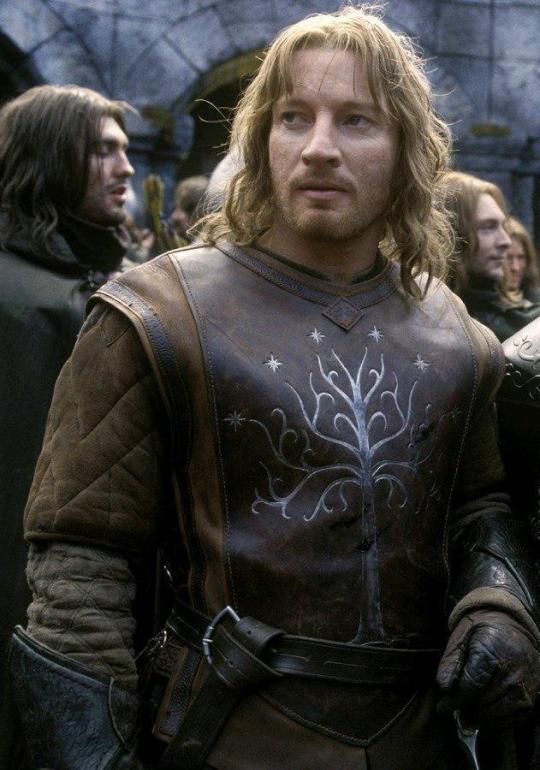
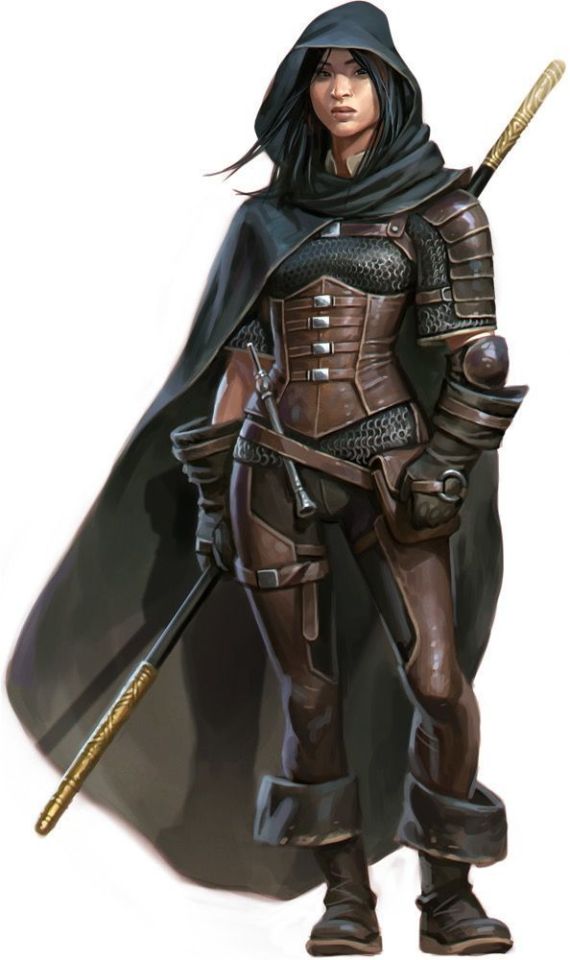
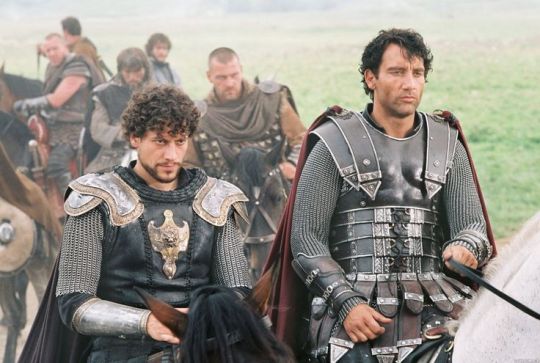

And I think this is how we get to characters like Ragnar and Vane. This idea of leather as practical gear and light armour, it's fantasy, but it has this lineage, behind which sits cowboy chaps and bomber/flight jackets. It's usually brown compared to the punk bad boy's black, less shiny, and more often piecemeal or decorated. In fact, there's a great distinction between the two Period Leather Modes within the same piece of media: Robin Hood (2006)! Compare the brooding, fascist-coded villain Guy of Gisborne with the shabby, bow-wielding, forest-dwelling Robin:

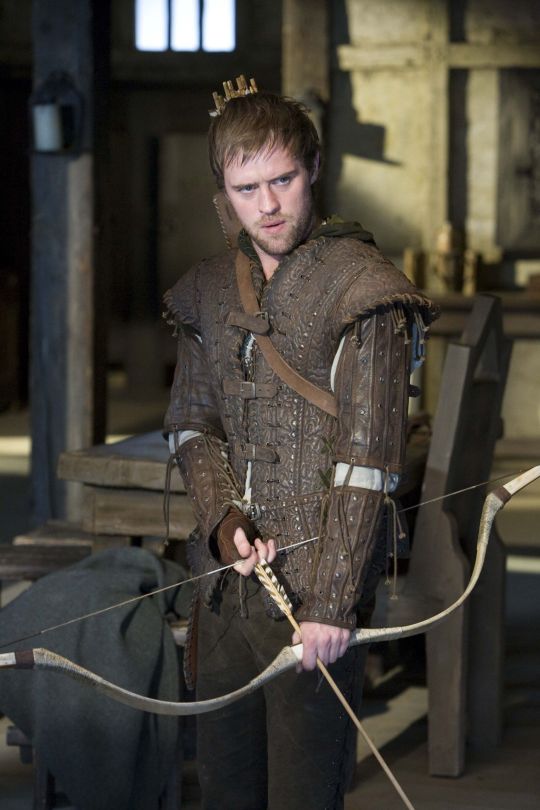
So, back to the original question: What's the difference between Charles Vane in Black Sails, and Edward Teach in Our Flag Means Death?
Simply put, it's intention. There is nothing intentional about Vane's leather in Black Sails. It's not the only leather in the show, and it only says what all shabby period leather says, relying on the same tropes as fantasy armour: he's a bad boy and a fighter in workaday leather, poor, flexible, and practical. None of these connotations are based in reality or history, and they've been done countless times before. It's boring design, neither historically accurate nor particularly creative, but much the same as all the other shabby chic fighters on our screens. He has a broad lineage in Lord of the Rings and Pirates of the Caribbean and such, but that's it.
In Our Flag, however, the lineage is much, much more intentional. Ed is a direct homage to Mad Max, the costuming in which is both practical (Max is an ex-cop and road warrior), and draws on punk and kink designs to evoke a counterculture gone mad to the point of social breakdown, exploiting the thrill of the taboo to frighten and titillate the audience.
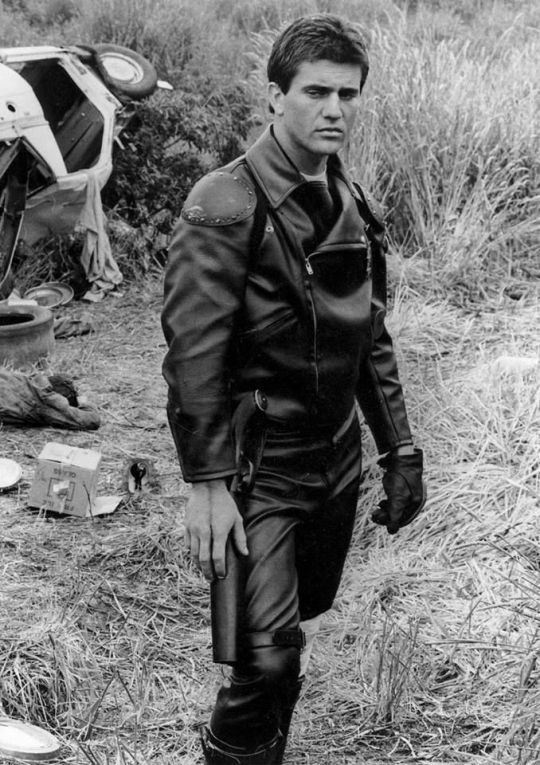
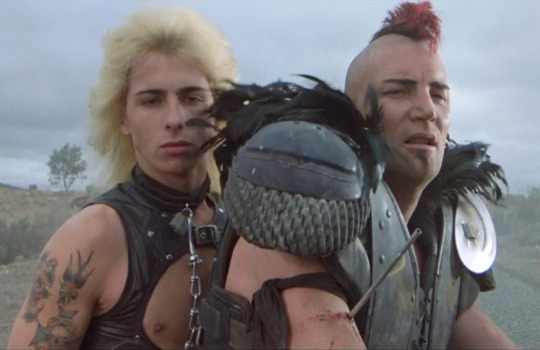
In particular, Ed is styled after Max in the second movie, having lost his family, been badly injured, and watched the world turn into an apocalypse. He's a broken man, withdrawn, violent, and deliberately cutting himself off from others to avoid getting hurt again. The plot of Mad Max 2 is him learning to open up and help others, making himself vulnerable to more loss, but more human in the process.

This ties directly into the themes of Our Flag - it's a deliberate intertext. Ed's emotional journey is also one from isolation and pain to vulnerability, community, and love. Mad Max (intentionally and unintentionally) explores themes of masculinity, violence, and power, while Max has become simplified in the popular imagination as a stoic, badass action hero rather than the more complex character he is, struggling with loss and humanity. Similarly, Our Flag explores masculinity, both textually (Stede is trying to build a less abusive pirate culture) and metatextually (the show champions complex, banal, and tender masculinities, especially when we're used to only seeing pirates in either gritty action movies or childish comedies).
Our Flag also draws on the specific countercultures of motorcycles, rockers, and gay/BDSM culture in its design and themes. Naturally, in such a queer show, one can't help but make the connection between leather pirates and leather daddies, and the design certainly nods at this, with its vests and studs. I always think about this guy, with his flat cap so reminiscient of gay leather fashions.

More overtly, though, Blackbeard and his crew are styled as both violent gangsters and countercultural rockstars. They rove the seas like a bikie gang, free and violent, and are seen as icons, bad boys and celebrities. Other pirates revere Blackbeard and wish they could be on his crew, while civilians are awed by his reputation, desperate for juicy, gory details.
This isn't all of why I like the costuming in Our Flag Means Death (especially season 1). Stede's outfits are by no means accurate, but they're a lot more accurate than most pirate media, and they're bright and colourful, with accurate and delightful silks, lace, velvets, and brocades, and lovely, puffy skirts on his jackets. Many of the Revenge crew wear recognisable sailor's trousers, and practical but bright, varied gear that easily conveys personality and flair. There is a surprising dedication to little details, like changing Ed's trousers to fall-fronts for a historical feel, Izzy's puffy sleeves, the handmade fringe on Lucius's red jacket, or the increasing absurdity of navy uniform cuffs between Nigel and Chauncey.
A really big one is the fact that they don't shy away from historical footwear! In almost every example above, we see the period drama's obsession with putting men in skinny jeans and bucket-top boots, but not only does Stede wear his little red-heeled shoes with stockings, but most of his crew, and the ordinary people of Barbados, wear low boots or pumps, and even rough, masculine characters like Pete wear knee breeches and bright colours. It's inaccurate, but at least it's a new kind of inaccuracy, that builds much more on actual historical fashions, and eschews the shortcuts of other, grittier period dramas in favour of colour and personality.
But also. At least it fucking says something with its leather.
#everyone say 'thank you togas' for not including a long tangent about evil rimmer in red dwarf 5x05#Our Flag Means Death#Togas does meta#and yes these principles DO fall apart slightly in s2 and i DON'T like those costumes as much#don't get me wrong they're fun and gorgeous - but generally a bit less deep and more inaccurate. so. :(#I'm not sure this really says anything new about Our Flag but I just needed to get my thoughts out#i hate hate hate Gritty Period Drama costumes they're so boring and so ugly and so wrong#god bless OFMD for using more than 3 muted colours and actually putting men in heels (and not as a shorthand for rich/foppish villainy) <3#looking at that Tudors still is insane like they really will go to any lengths to not make men feel like they've got bare legs XD#image descriptions in alt text#and yes i DID just sink about two hours into those so you'd better appreciate them
1K notes
·
View notes
Note
Some insight into the designs and fashion of the 20s would be so cool, especially since it's kinda hard these days to sift through just costume listing :'0
Yeah, sadly, the usefulness of a Google search is greatly diminished these days. You can still find articles written by actual human beings and genuine historical garments, but you have to wade through a lot of junky costumes and AI bullshit to get there.
I can't possibly fully explain 1920s fashion here, though. It's a broad enough topic to write a sizable book about...which is why people have written many books about it. Check out some books. There are things you can get pretty cheap from resellers, everything from academic screeds about the politics behind the fashion trends of the time, to clothing catalogue compilations from the 20s, to giant coffee table books full of glorious photos.
Here's a PDF version of one of those clothing catalog collections. There's an entire preface about 1920s fashion in general too.
There are some pretty well made blogs about the topic out there as well. Vintage Dancer is one of them. The front of the site is unfortunately kind of cluttered with ads for costume apparel and modern clothing inspired by the 20s, but scroll past that to the historical bits and you'll find pertinent things.
There are some great fashion YouTubers too, like Karolina Zebrowska. Although she's not focused heavily on 1920s fashion, she talks a lot about early 20th century fashion in general. She also talks a lot about the historical context of those fashions.
Also, try online museum displays. The Met Museum has a searchable collection, for instance. Look up 1920s fashion, 1920s dresses, 1920s suits, etc.
Cameras were popular and accessible in the 1920s. Look at pictures of what people actually wore. You can find these images in free government photo archives, or licensing libraries like Getty Images (you don't have to license anything to look at it). And there's always Shorpy. Poor old, underappreciated Shorpy. Their archive is searchable.
1K notes
·
View notes
Text
in view of Netflix and a few other networks apparently announcing that they are no longer requiring actors to wear corsets/stays, but framing it as the ultimate in feminist allyship against an Oppressive Historical Torture-Garment (and presumably typing their press releases one-handed, if you catch my drift), I have a few things to say:
1. I presume they will also be condemning Spanx, dieting, weight loss surgery, obsessive exercise, breast or pectoral or ab implants, Flat Tummy Tea, editing actors’ bodies in post, etc. since this is all about promoting healthy body image. ...right?
2. Okay, this one is not tongue-in-cheek: if a costume designer forces you to wear massively uncomfortable stays or corsets and tells you your discomfort is an inherent feature of that garment type, they are lying. All the articles on this cited reports from actresses saying they threw up because of Regency stays or couldn’t eat in Edwardian corsets. And while I’m sure some of that is giving interview audiences the sensationalism they want to hear, I believe them in general.
Someone needs to tell them that that’s not normal.
I have worn corsets and stays a lot in my life. I know people who wear them as everyday support garments. And neither I nor anyone I know has been seriously hindered in normal activities by them. There are even photos and videos of women from corset-intensive eras climbing glaciers, playing sports, having snowball fights, doing manual labor...living their lives
Sure, there have always been and will always be people who find corsets or stays inherently uncomfortable- that’s why it’s good to have many support garment options available for people who need them. And there have always been and will always be ill-made, ill-fitting, or extreme examples of the type- I’m not saying corsets are always The Most Comfortable Thing Ever For Everyone, because that’s not universally true of any garment.
But these production companies have been hurting actresses under the guise of “historical accuracy,” and this latest pronouncement is just another attempt to shift the blame.
Don’t let them get away with it.
EDIT: Apparently the Official nature of the source for this announcement is in question, but the gist of the post still stands, so I’m leaving it up. Will edit further if new developments arise.
#netflix#period drama#historical fiction#bbc#itv#(those are the other networks mentioned in the articles)#dress history#fashion history#historical costuming#historical fashion#corsets#stays#rant#diet mention#disordered eating mention
3K notes
·
View notes
Text
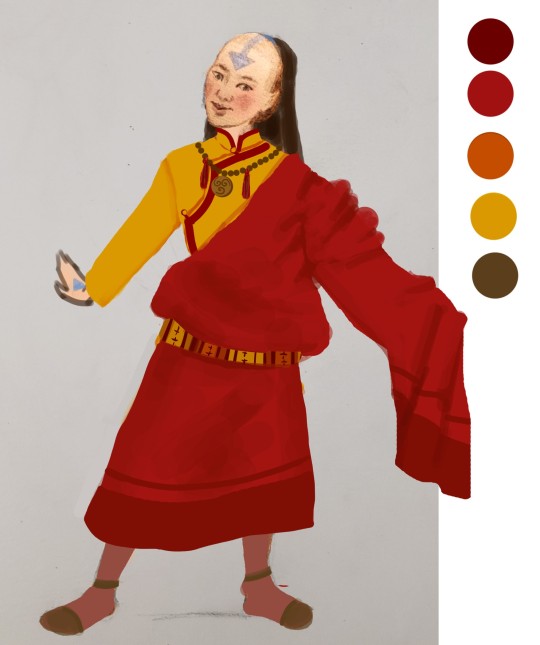
I redesigned Yangchen's outfit!
... I actually designed a lot of outfits for her, because I am Extremely Normal about these books, and also I like costume design and learning about historical clothing.
Short disclaimer: These fantasy clothes aren't culturally or historically accurate, just historically and culturally influenced. I don't have any expertise in East or Central Asian culture or clothing, I've just been clicking around on the internet a lot the last two weeks learning things because that's my idea of fun lol. If you wanted to talk to people who actually know things you should check out @atlaculture or like @ziseviolet, both of whom's blogs I referenced while drawing.
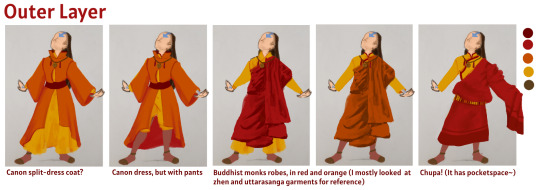
I only designed two alternates for the outer robes. The first is based loosely off the robes Buddhist monks wear (loosely, because drawing draped fabric is hard ^^') especially the Tibetan zhen robe. This garment is just a long wide rectangle of cloth which can be draped across the body in lots of ways (versatility ftw!).
The other garment I drew is a Chuba, a traditional garment from Tibet and the Himalayas. It's a robe, but it highkey reminds me of kilts and hoodies, in that it a) can be worn over one or both shoulders or just as a skirt and b) it makes a giant pocket over the stomach. The long sleeves can be folded up or tied back btw.

I spent the most time on the middle layer, because I was thinking it has to be something she could comfortably fight in while also being suitable for diplomatic meetings, meditating, espionage, and possibly sleeping.
And like. You can fight and hike and whatnot in loose skirts, but it's annoying how twisted up they can get while sleeping. ALSO, YC does a lot of flying and leaping, so my girl needs pants. My faves are definitely the Xiaolin monk pants and the yellow wrap pants Aang wears. I tried dhoti (Indian wrap pants) because that kind of looks like what the giant statue of Yangchen meditating might be wearing, but I think it looks odd paired with a highwaisted shirt instead of a long tunic. Maybe I'll do some more drawings with her in a tunic and dhoti or a monk's dhonka and shemdap later, idk.

As any good historical fashion nerd knows, foundational garments are everything (◡‿◡✿).
But also, there's a scene where Yangchen and Kavik pretend to be lovers, and are "discovered" by a maid sleeping in the same room, with Yangchen in a state of partial undress (gasp!)
I am living for this fake drama; I need to know how scandalized the maid was lmao.
When the maid walks in, Yangchen immediately wraps herself in a bedsheet before ushering the maid back out the door. Maybe all she did was take off her outer robe... but why would she need to wrap herself in a sheet if she was wearing a long-sleeved high-necked gown? I got the sense from both the book and cursory research about buddhist monks that walking around without your outer robes was socially acceptable, at least in casual settings. I think it more likely she was in her underclothes, which historically (in the west anyway) would also double as sleeping clothes.
"The Aang" is censored because this is Tumblr-dot-com. Its mostly a joke, but also, I know other countries are less uptight about bººbies, so like, maybe it's a valid option ¯\_(ツ)_/¯
The ~Water Tribe~ look is based off Sokka's swimwear and not Katara's, mostly because chest binding seems antithetical to airbending.
All the other undergarment designs are based on hanfu neiyi, because that's what I could find reference photos and romanized names for.
I'm tired of typing now. Lemme know if you have questions about something, or want me to post a larger version of a specific outfit. I am open to feedback and tentatively open to requests.
#costume design#character redesign#Yangchen#avatar#airbenders#air nomads#avatar novels#chronicles of the avatar#atla#I realize now there are typos in the jpeg rip#too late to change it now
341 notes
·
View notes
Note
This is kind of random, but would it have been a struggle for a big busted women to wear fashionable silhouettes in the medieval era? I’ve heard some costume historians discuss that there were forms of bust support, but most of what I’ve seen pre-1500s seems like it would have been a nightmare for any ancestor with a similar bodytype to wear. Am I just from a line of women doomed to horrible back pain? (On the flip side of the situation, I’ve found corsets and stays to be rather comfortable, so that’s not a problem)
As a fellow big boob haver, I have good news for you! There were pretty good Medieval bust supporting garments and I have tested one of them.
With sturdy fabric, tailoring and lacing you can create pretty good bust support. Lacing was popularized first in 12th century in form of bliaut, and in 14th century tailoring became standard for everyday garments. I don't know how well bliaut supported the bust, but since it doesn't fit super snugly, I assume it doesn't distribute the weight of the boobs as well as tailored supporting garments and therefore isn't as supportive. I'm also not actually sure if there was proper bust supporting garments before that, I haven't looked into it. I know Romans bound their breasts with cloth wrapped around the chest, so maybe that technique continued (at least for those who especially needed it) till lacing and tailoring became a thing. For more about how supporting garments developed in Europe through history, I have a post about development of lacing, which coincides pretty well with that history from 12th century forward.
Personally I have experience with Medieval Bathhouse dress, which was used in the Germanic Central-European area roughly in 14th to 16th century. It's called the Bathhouse dress because most depictions of it are from bathhouse settings, but there's depiction also in bed chambers and other contexts, so I think it's pretty safe to assume it was used more generally as an undergarment. It often had separate cups for the boobs (see the only extant garment left of it, the so called "Lengberg Castle Bra"), but not always. Unlike most other undergarments at the time, it was sort of a shift (the lowest layer) and a supporting garment combined into one.
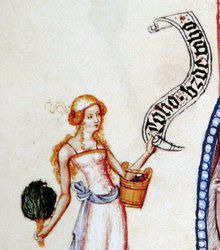

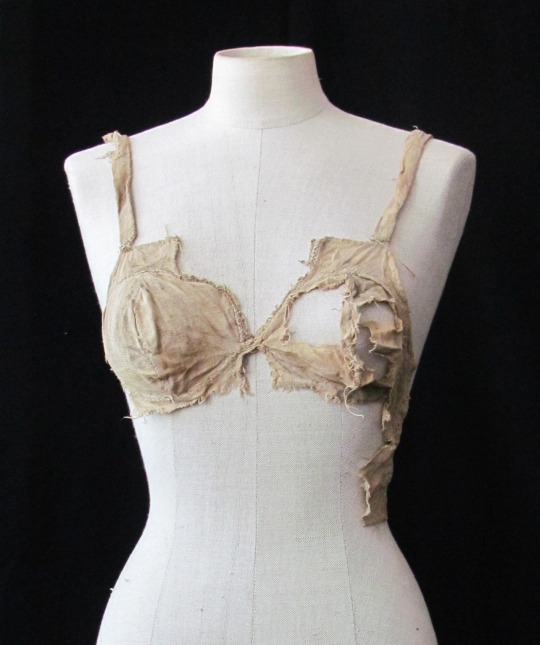
I sewed my own recreation of it (with some alterations because I made it for my everyday use, not as a historical recreation) and did a post about my results, where I go deeper into the history of the garment too. I didn't construct it very well and I did an error in the design of the back, which cause the strain of the shoulder straps to focus too much on very specific spots in the back panel, which eventually made the fabric there break too many times. (There were some other smaller design flaws too, like the waistline is lower than my natural waist so it rose and wrinkled annoyingly.) I did use it daily (except when I washed it) for a fairly long time though and it was super comfortable and helped a lot with back pain (and shoulder pain caused by use of modern bras). I hate that I've had to go back to modern bras because I haven't had the time to remake it yet. (I'll probably make a follow up post once I get around to it, where I go through the issues of the first version and how I addressed them in the next attempt.) Well fitted and shaped bodice which is then laced does surprisingly much even without any additional reinforcements.
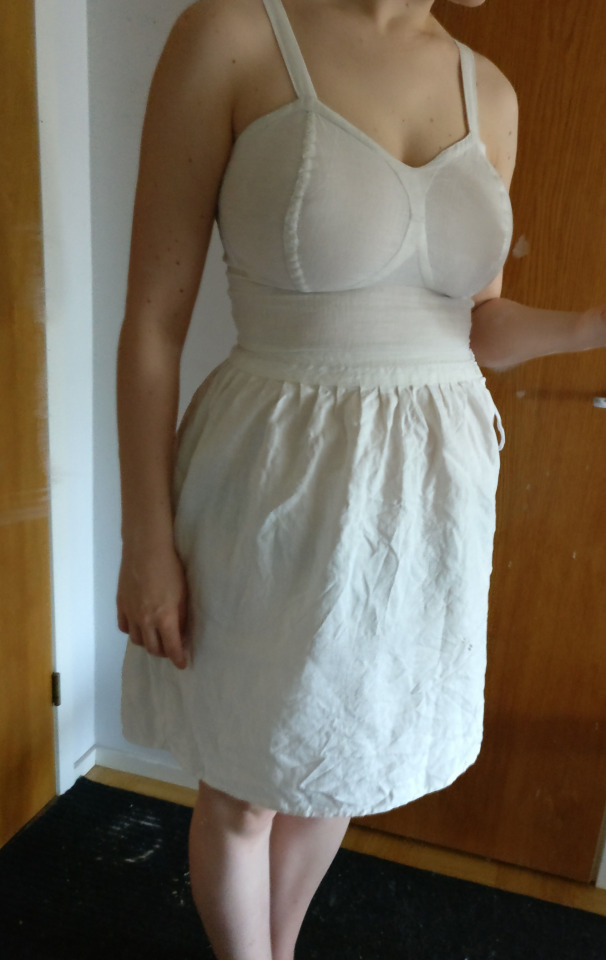

I haven't made a Medieval kirtle (though I will some day), but it was the more widely used Medieval supporting garment, which eventually replaced Bathhouse dress in the area where that was used. Kirtle is worn over a shift, but it broadly works similarly. Kirtles could be front, side or back laced depending on the time period and how the Kirtle was constructed. Multiple layers of kirtles could be used and looser overgarments (like houppelande) were often used on top of it. Kirtle was used by everyone, including men, but for those who didn't need bust support, it's purpose was mainly to create the fashionable silhouette. Here's three depictions of kirtles from 15th century. First unlaced, but has lacing on the front, second close up of the side lacing and third shows nicely how both front and side/backlacing shaped the bust.

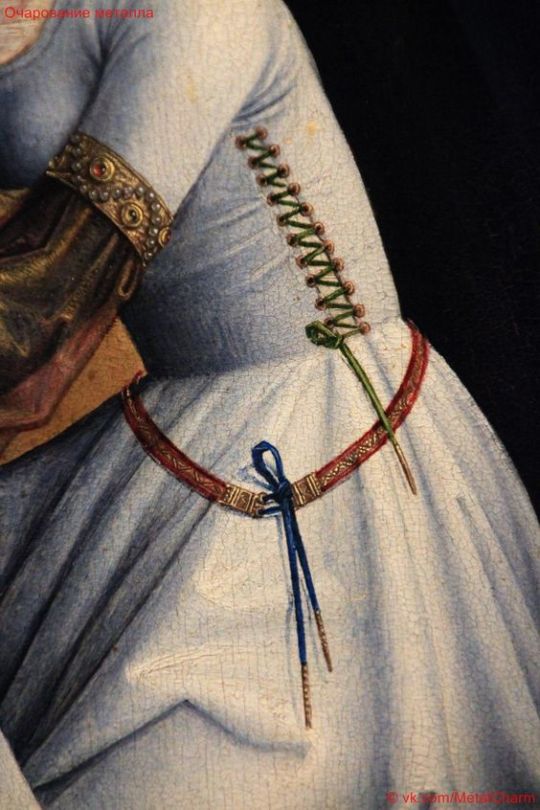
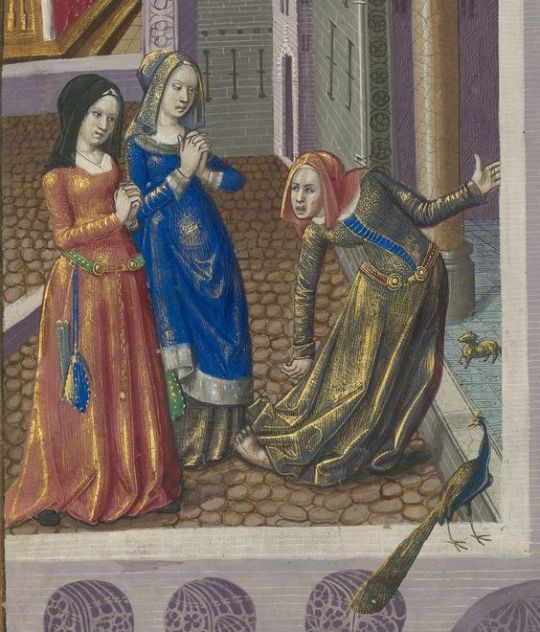
Morgan Donner is a costumer, who focuses a lot on Medieval costuming and has a big bust, so while I haven't personally tested the supportiveness of kirtle, she certainly has. The kirtle bodice part needs to be patterned to accommodate the breasts by giving it round shapes and the kirtle needs to be a little too small so there's room to lace it to fit well. Lining also helps to reinforce the fabric and make it more firm and supportive. Here's Morgan's pattern from the tutorial in her website and how the kirtle eventually fits for her. (Also look at the handsome boy in his handsome matching outfit.)
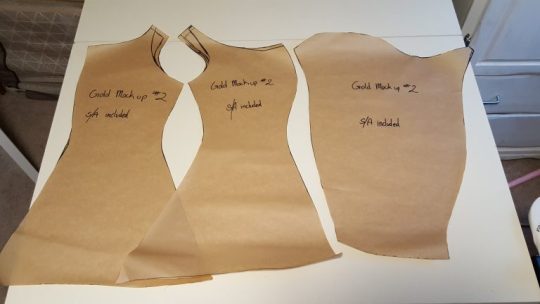
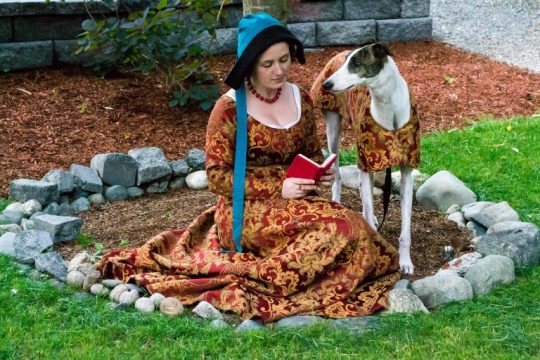
She also has a video relating to the same kirtle project, where she explains her method to pattern a kirtle specifically so it's supportive for big bust.
In 16th century more stiffness was added to kirtles, first with very stiff lining and then with boning, but that doesn't necessarily add to the bust support, rather it just allows the kirtle to shape the bust and the body in general more and better support a heavy skirt. Firm fabric secured snugly with lacing is already very good at distributing the weight of the boobs to the whole torso.
In conclusion, at least since 14th century people with our body type were not doomed to eternal back pain and even before that some ways to help with it were probably used.
#historical fashion#fashion history#dress history#history#historical costuming#historical sewing#sewing#crafts#costuming#fashion#medieval fashion
232 notes
·
View notes
Text

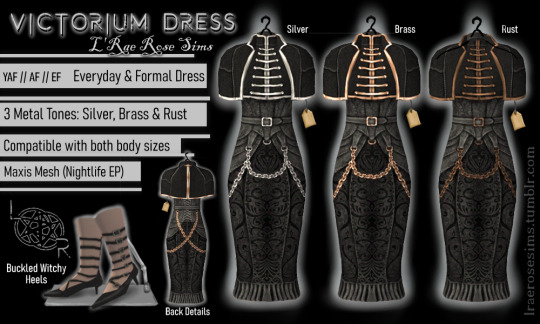
..::VICTORIUM DRESS::.. - Recolour for Sims 2 YAF / AF / EF
Maxis Mesh (Originally Elder, enabled for Young Adult and Adult)
Base Game (Nightlife EP Required), so no custom mesh needed
3 Metal Tone Variations: Silver, Brass and Rust
Works with both body sizes
~Please Keep in Mind~ The original Maxis Mesh was designed for Elder Females therefore the body shape of this dress has the wider hips and lower, less prominent breasts of Elder Females.
HOWEVER in my personal opinion it actually suits the garment style perfectly, as this outfit has a historic charm to it.
All textures/details of this design is digitally hand-drawn except for the plain black linen base texture on the capelet.
FREE SFS DOWNLOAD HERE
L'Rae Rose models in this post: Lonna Weiford, Felice Louise Arcon, Eme A'nadu



#the sims 2#ts2cc#alt fashion#goth aesthetic#the sims cc#ts2#sims 2 custom content#downloads-outfits
295 notes
·
View notes
Text
[Hanfu · 漢服]Chinese Late Warring States period(475–221 BC) Traditional Clothing Hanfu Based On Based On Chu (state)Historical Artifacts

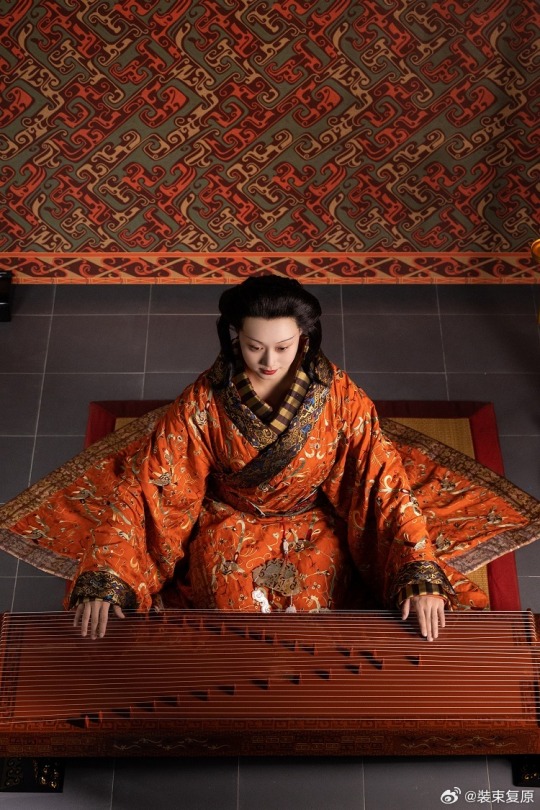
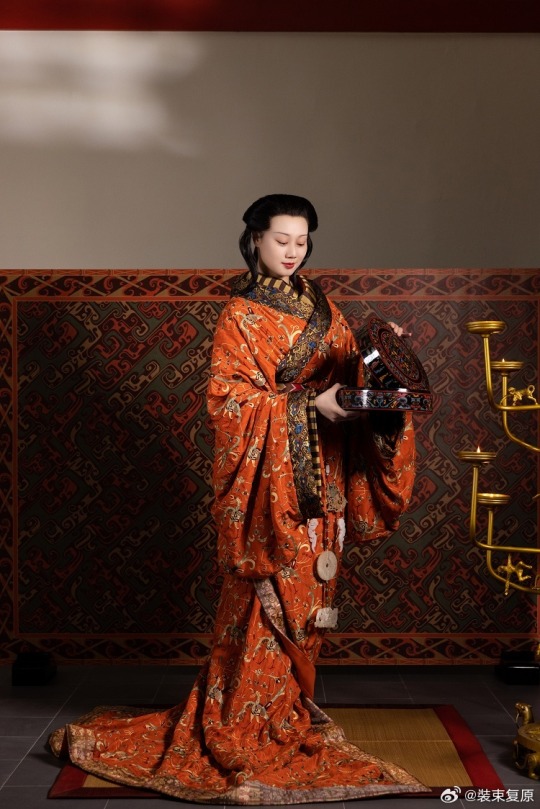
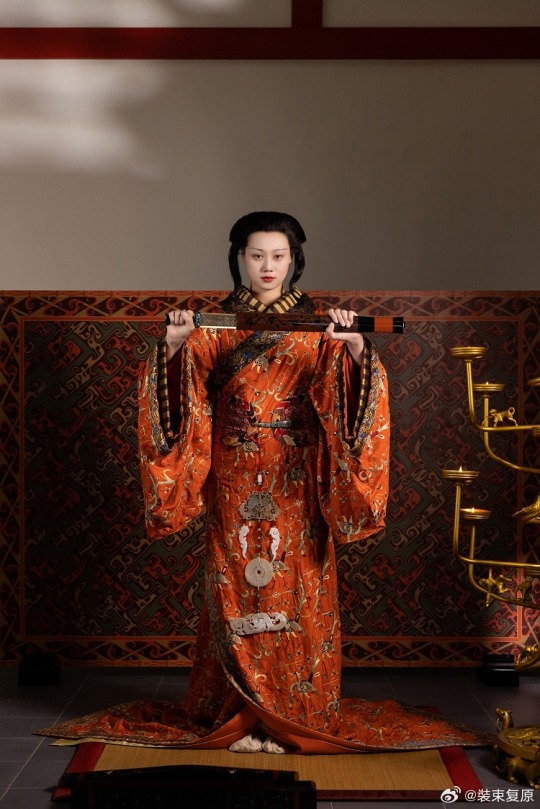
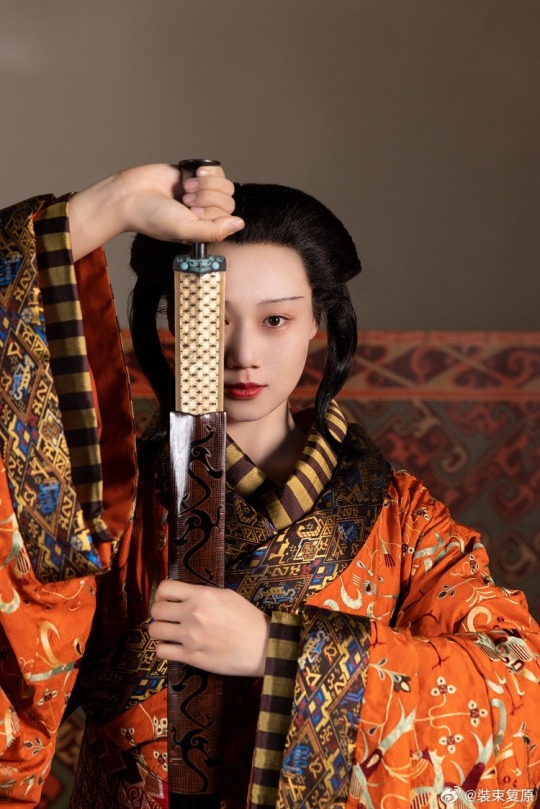
【Historical Artifact Reference】:
Late Warring States period(475–221 BC):Two conjoined jade dancers unearthed from Jincun, Luoyang,collected by Freer Museum of Art
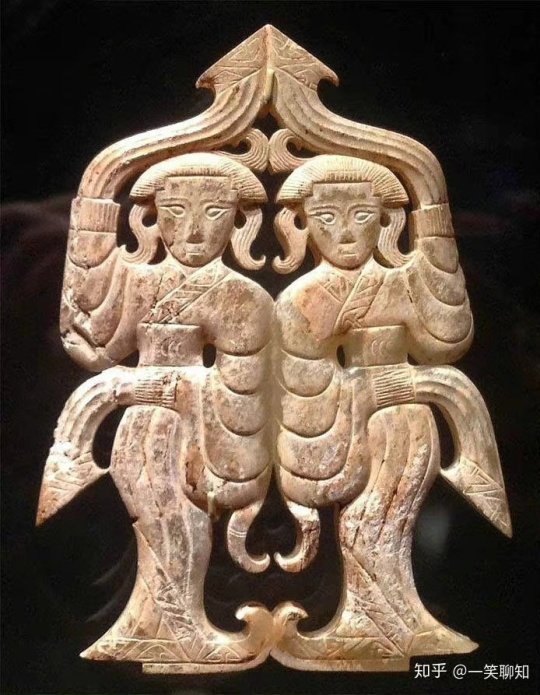
A similar jade dancer was also unearthed from the tomb of Haihunhou, the richest royal family member in the Han Dynasty, and was one of his treasures.

Warring States period, Eastern Zhou dynasty, 475-221 BCE,jade dancer by Freer Gallery of Art Collection.

Warring States period(475–221 BC)·Silver Head Figurine Bronze Lamp.Unearthed from the Wangcuo Tomb in Zhongshan state during the Warring States Period and collected by the Hebei Provincial Institute of Cultural Relics and Archaeology

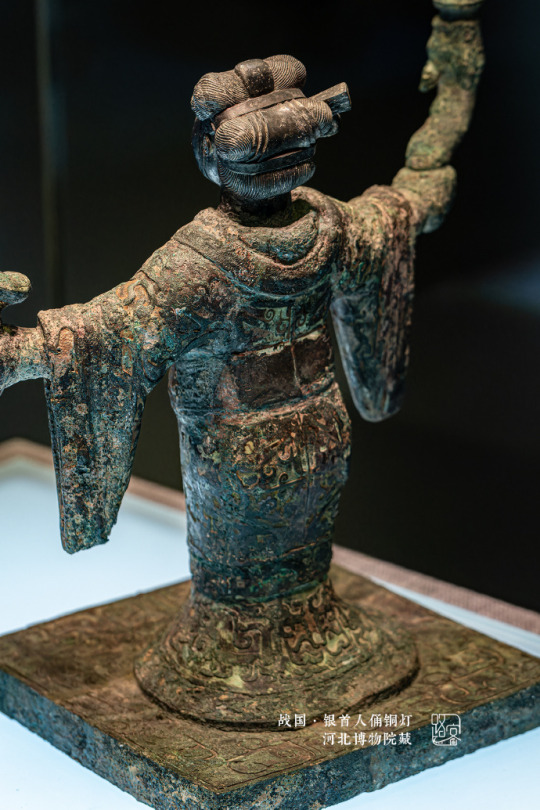
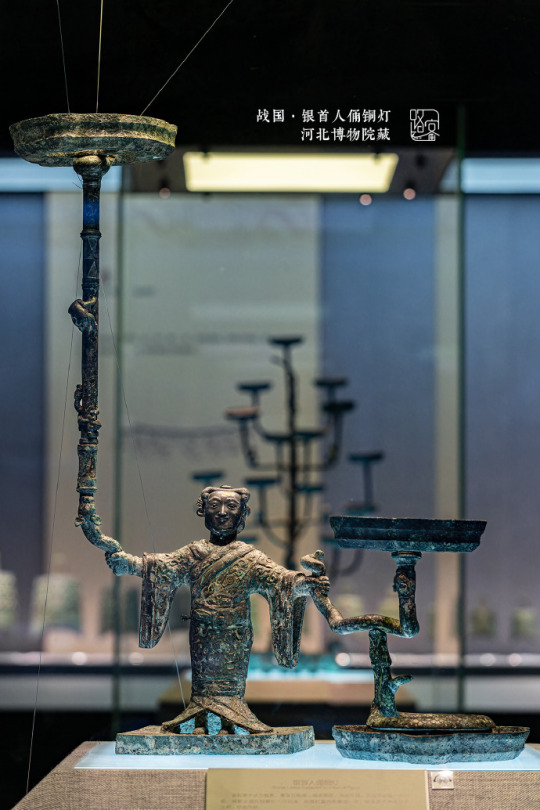
The figurine of a man dressed as a woman holds a snake in his hand, and 3 snakes correspond to 3 lamps.
Sword of Goujian/越王勾践剑:
The Sword of Goujian (Chinese: 越王勾践剑; pinyin: Yuèwáng Gōujiàn jiàn) is a tin bronze sword, renowned for its unusual sharpness, intricate design and resistance to tarnish rarely seen in artifacts of similar age. The sword is generally attributed to Goujian, one of the last kings of Yue during the Spring and Autumn period.
In 1965, the sword was found in an ancient tomb in Hubei. It is currently in the possession of the Hubei Provincial Museum.

【Histoty Note】Late Warring States Period·Noble Women Fashion
The attire of noblewomen in the late Warring States period, as reconstructed in this collection, is based on a comprehensive examination of garments and textiles unearthed from the Chu Tomb No. 1 at Mashan, Jiangling, as well as other artifacts from the same period.
During the late Warring States period, both noble men and women favored wearing robes that were connected from top to bottom. These garments were predominantly made of gauze, silk, brocade, and satin, with silk edging. From the Chu Tomb No. 1 at Mashan, there were discoveries of robes entirely embroidered or embroidered fragments. The embroidery technique employed was known as "locked stitches," which gave the patterns a three-dimensional, lively appearance, rich in decoration.
The two reconstructed robes in this collection consist of an inner robe made of plain silk with striped silk edging, and an outer robe made of brocade, embroidered with phoenixes and floral patterns, with embroidered satin edging. Following the structural design of clothing found in the Mashan Chu Tomb, rectangular fabric pieces were inserted at the junction of the main body, sleeves, and lower garment of the robe. Additionally, an overlap was made at the front of the main body and the lower garment to enlarge the internal space for better wrapping around the body curves. Furthermore, the waistline of the lower garment was not horizontal but inclined upward at an angle, allowing the lower hem to naturally overlap, forming an "enter" shape, facilitating movement.
The layered edging of the collars and sleeves of both inner and outer robes creates a sense of rhythm, with the two types of brocade patterns complementing each other, resulting in a harmonious effect. Apart from the robes, a wide brocade belt was worn around the waist, fastened with jade buckle hooks, and adorned with jade pendants, presenting an elegant and noble figure.
The reconstructed hairstyle draws inspiration from artifacts such as the jade dancer from the late Warring States period unearthed at the Marquis of Haihun Tomb in Nanchang, and the jade dancer from the Warring States period unearthed at Jin Village in Luoyang. It features a fan-shaped voluminous hairdo on the crown, with curled hair falling on both sides, and braided hair gathered at the back. The Book of Songs, "Xiao Ya: Duren Shi," vividly depicts the flowing curls of noblewomen during that period. Their images of curly-haired figures in long robes were also depicted in jade artifacts and other relics, becoming emblematic artistic representations.
The maturity and richness of clothing art in the late Warring States period were unparalleled in contemporary world civilizations, far beyond imagination. It witnessed the transition of Chinese civilization into the Middle Ages. The creatively styled garments and intricate fabric patterns from the Warring States period carry the unique essence, mysterious imagination, and ultimate romanticism of that era, serving as an endless source of artistic inspiration.
--------
Recreation Work by : @裝束复原
Weibo 🔗:https://weibo.com/1656910125/O6cUMBa1j
--------
#chinese hanfu#Late Warring States Period#Warring States period(475–221 BC)#hanfu#hanfu accessories#chinese traditional clothing#hanfu_challenge#chinese#china#historical#historical fashion#chinese history#china history#漢服#汉服#中華風#裝束复原
171 notes
·
View notes
Photo
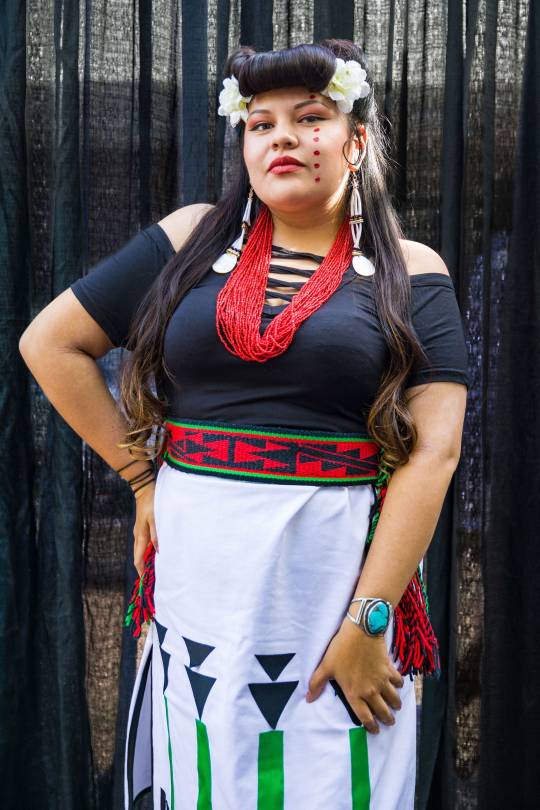
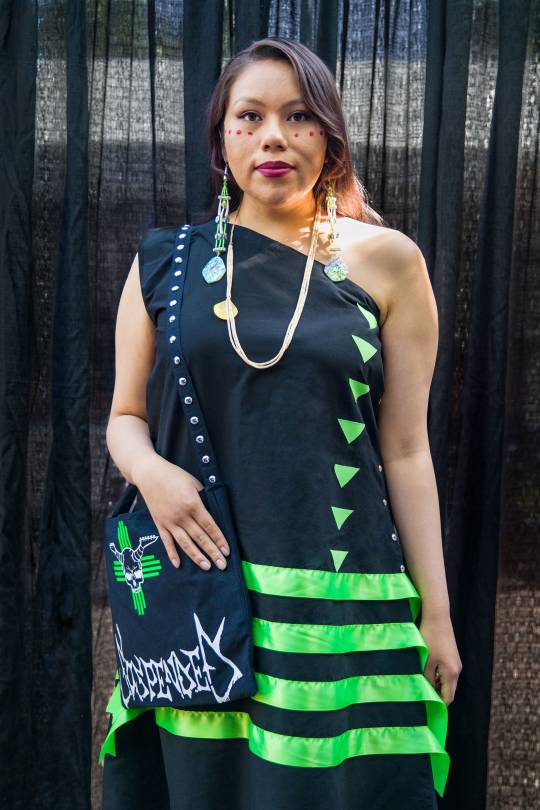

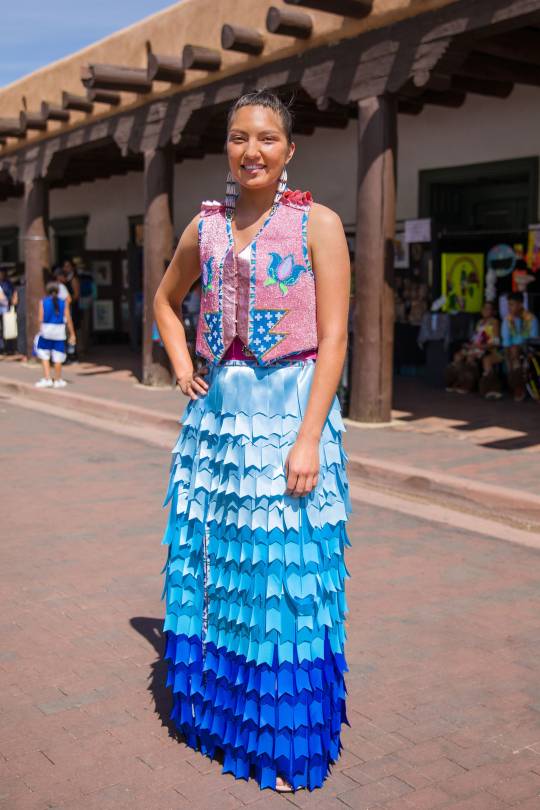

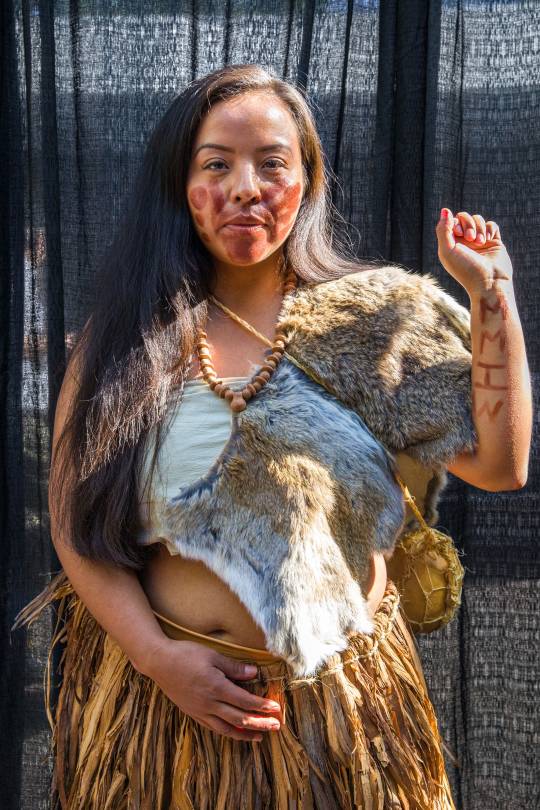

Street style at the Santa Fe Indian Market, photographed by Shayla Blatchford
Check out the source for article, more photos, and names of designers!
Another Vogue article on artists and designers at the Santa Fe Indian Market.
More images below the cut!
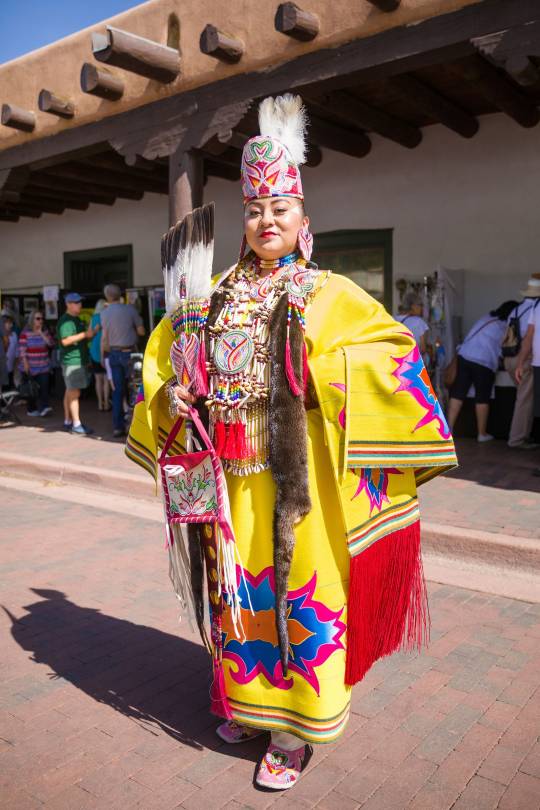
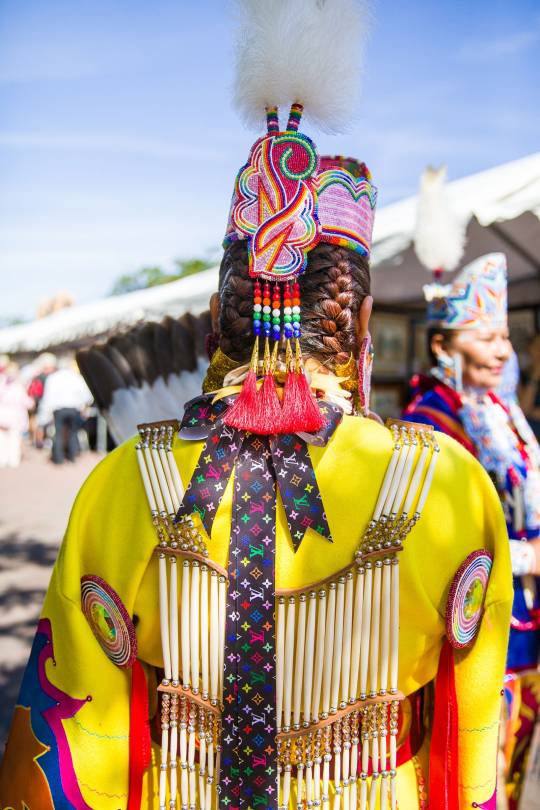
^ Natasha Ashley Brokeshoulder
“Natasha Ashley Brokeshoulder, for instance, who is Diné, wore a wing dress created by her father-in-law, while her breastplate was assembled by her husband. “I got the right to wear the regalia that I have from my husband, who is Absentee Shawnee from the Southern Plains,” she said, adding that it is respectful to gain permission from other tribes to wear their specific styles of garment.”
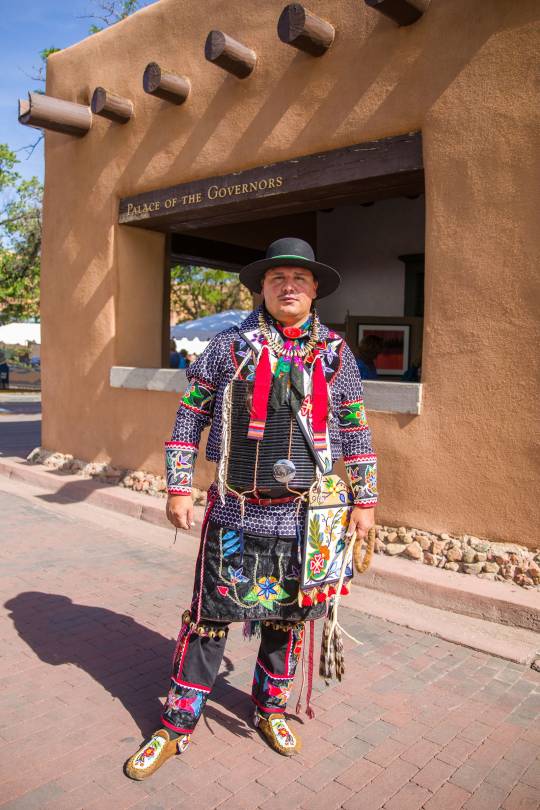
^ James Budday
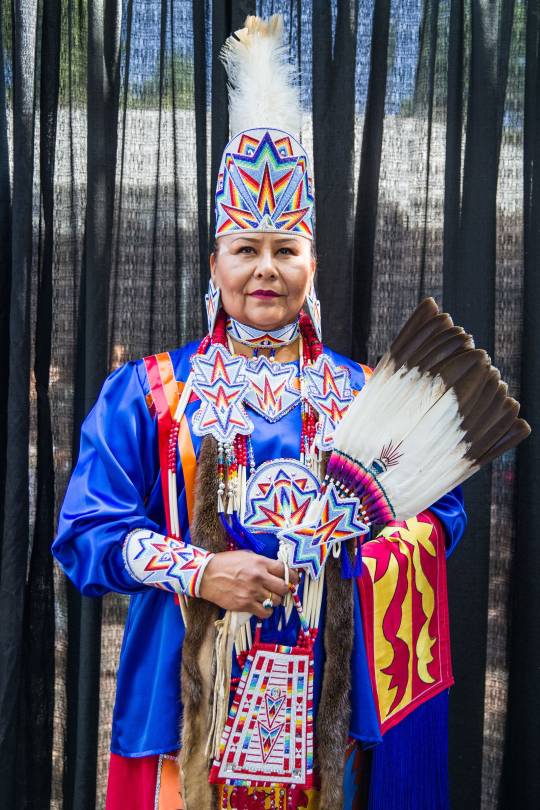
^ Sharon Brokeshoulder
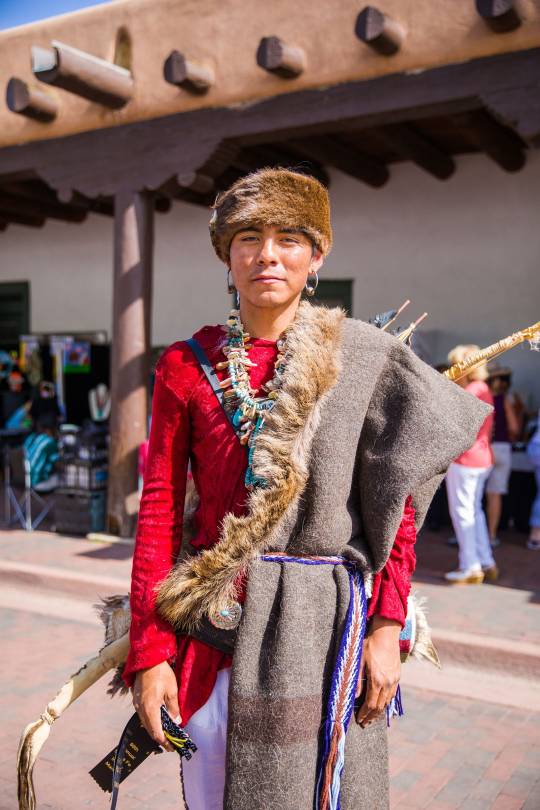
^ Zeke Arjeanas
‘Others chose a more historical approach to fashion. Zeke Arjeanas, who is also Diné and won first place in the men’s category, referenced the Long Walk of the Navajo (the 1860s deportation of this indigenous tribe from their native land) for his traditional Clothing Contest outfit. “What I’m wearing is a blanket—not a Navajo blanket, but an army-issued blanket that was issued to the Navajos [at that time],” he said. “With the army-issued blanket, it’s a lot thicker and scratchier versus a Navajo textile blanket, which was more fine, lightweight, and waterproof.”’
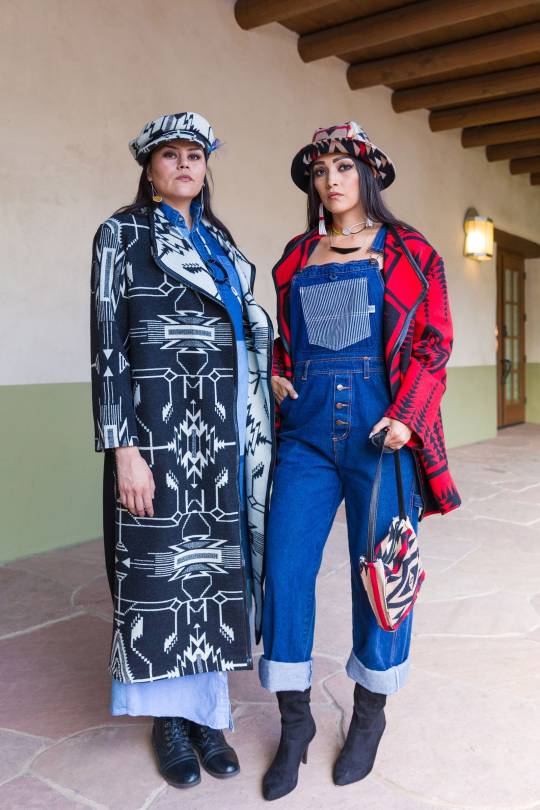
^ Two looks from Korina Emmerich with jewelry by Tania Larsson
“...the new collection of the New York–based designer Korina Emmerich (Puyallup), whose asymmetrical vests and graphic wool coats offered a modern interpretation of her tribe’s punchy aesthetic. She also used Gwich’in-inspired jewelry by Larsson, mentioned above, in the show. “What I admire in Korina’s work is her modern, impeccable cuts,” Larsson said. “There is a traditional element that is inherent within my work because of the materials that I use and through the process that they are acquired, such as trade and through community exchanges.””

^ Phillip Bread in a Matthew Charley squash blossom necklace

^ Marcus Winchester
#fashion#native american#native american fashion#native american art#jewelry#headdress#men's fashion#hairstyles#shawnee#dine
5K notes
·
View notes